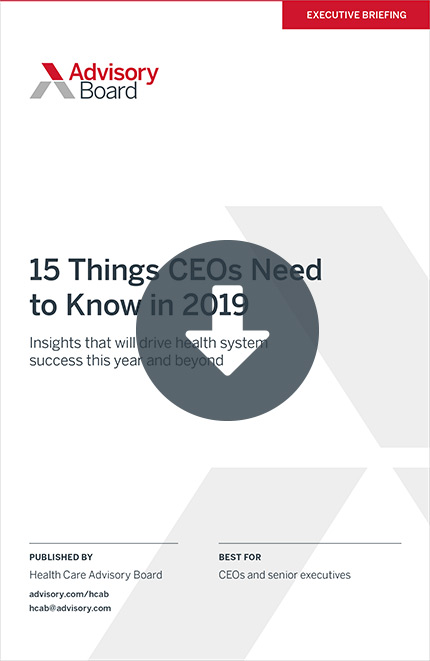The Federal Aviation Administration is testing ways to deliver commercial products via drones—and the health care industry is getting in on the ground floor, the Associated Press reports.
Innovation 101: Cheat sheets for today's digital world
Providers, city officials test new uses for drones in health care
Last month, WakeMed Health & Hospitals in North Carolina, the United Parcel Service (UPS), and the drone company Matternet teamed up to test whether drones can help providers speed up the process of transporting lab samples to and from medical facilities. For the pilot program, FAA authorized WakeMed Health & Hospitals to use commercial drones to transport lab samples from WakeMed's medical park to the hospital's main building for lab testing.
The drone, Matternet's M2 "quadcopter" drone, is equipped with a secure box that contains the vials of blood or other lab specimens. The drone can carry medical samples of up to 5 pounds as far as 12.5 miles, but to start, the drone will only cover about one-third of a mile. It will make the trip at least six times a day five days a week.
Matternet CEO Andreas Raptopoulos said the drone's flight path is technically within view of each facility. But the team hopes to expand the project to include miles-long distances between other Raleigh-area WakeMed buildings that are farther apart in coming months.
According to AP, North Carolina is one of nine regions participating in an FAA pilot program to test commercial uses for drones, including utility inspections and insurance claims. In Nevada, officials in Reno are testing whether they can use drones to deliver defibrillators to people experiencing health emergencies. Rebecca Venis, the city's communications director, said Nevada's pilot project is currently focused on using drones to transport defibrillators to rural areas and has not yet started home deliveries.
What drones could mean for health care
Experts have cautioned that the test flights do not mean unmanned aircrafts will start to whiz lab samples and results through the air within the next year, but drones do have the potential to change health care, AP reports.
Stuart Ginn, medical director of WakeMed innovations, said, "It's really … interesting to think about how [drones] can potentially change how we design our health care system." For instance, the use of drones could lead health care systems to consolidate their lab facilities at main hospitals and make available resources to treat patients at small medical facilities, HealthLeaders Media reports.
Ginn said, "The hope would be that we end up with a network connecting our three hospitals with what we call our 'healthplexes,' which are freestanding EDs often with labs, imaging facilities, and clinics as well. These are theoretical benefits at this point, but when we look long-term and start thinking about what we can do with the technology, that's where it gets interesting to us."
However, Venis noted that the health care industry presents unique regulatory hurdles because oftentimes the products being transported contain hazardous or personal materials. She said, "It's different than dropping a package."
Colin Snow, the founder of the drone research firm Skylogic, said it also remains to be seen whether it is cost-effective for providers to use drones to transport lab samples, noting the regulatory hurdles and costs of establishing a drone program.
Snow said, "It just goes down to the old adage: Just because you can, doesn't mean you should. They're cool, headline-making tests. But when you get down to ... the economics of logistics, that's a different matter" (Roth, HealthLeaders Media, 3/28; Drew, AP, 3/26; Baker, "Vitals," Axios, 3/27; Sheetz, CNBC, 3/26).
Innovation 101: Cheat sheets for today's digital world
Download our cheat sheets so you can keep track of the fast-changing technologies and capitalize on opportunities for IT-powered innovation. Check out our guides for these topics and more:
Don't miss out on the latest Advisory Board insights
Create your free account to access 1 resource, including the latest research and webinars.
Want access without creating an account?
You have 1 free members-only resource remaining this month.
1 free members-only resources remaining
1 free members-only resources remaining
You've reached your limit of free insights
Become a member to access all of Advisory Board's resources, events, and experts
Never miss out on the latest innovative health care content tailored to you.
Benefits include:
You've reached your limit of free insights
Become a member to access all of Advisory Board's resources, events, and experts
Never miss out on the latest innovative health care content tailored to you.
Benefits include:
This content is available through your Curated Research partnership with Advisory Board. Click on ‘view this resource’ to read the full piece
Email ask@advisory.com to learn more
Click on ‘Become a Member’ to learn about the benefits of a Full-Access partnership with Advisory Board
Never miss out on the latest innovative health care content tailored to you.
Benefits Include:
This is for members only. Learn more.
Click on ‘Become a Member’ to learn about the benefits of a Full-Access partnership with Advisory Board
Never miss out on the latest innovative health care content tailored to you.

